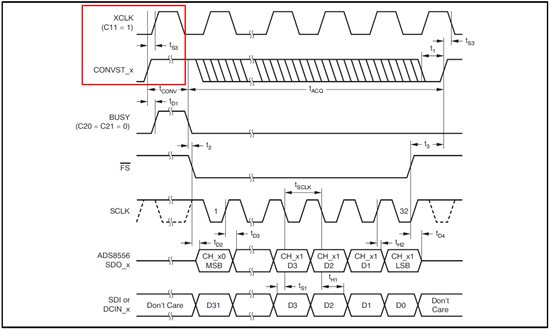Hi,
On page 41 of the DAC8728 it talks about the power sequencing. Since usually a 5V regulator is fed from +15V, and perhaps 3.3V regulator fed from the 5V or 15V, the power up sequencing is really backwards. Do you have any circuit proposals that will help with the sequencing? Are there any FET Switch type products that will help in this regard?
Also on Page 41, the datasheet indicates that "The DAC8728 permanently latches the status of some of the digital pins at power-on" and goes onto alude that these pins are "LDAC, CLR, RST, CS and RSTSEL". I could understand how and why RSTSEL would be latched, but not the others. Also, when looking for LDAC, CLR, RST and CS in the datasheet, the pin descriptions are rather ordinary, and nowhere else in the datasheet does it discuss that the state of these pins are latched or any other latching reference.
Could you please provide more information about the "latching", what it is that is latched, why it is latched, etc.?
Thank you,
Marc


